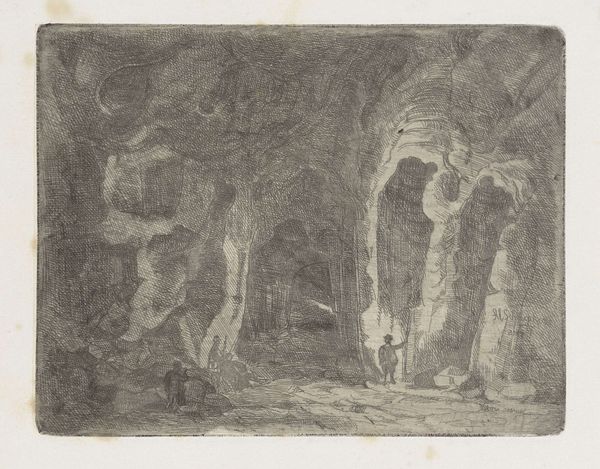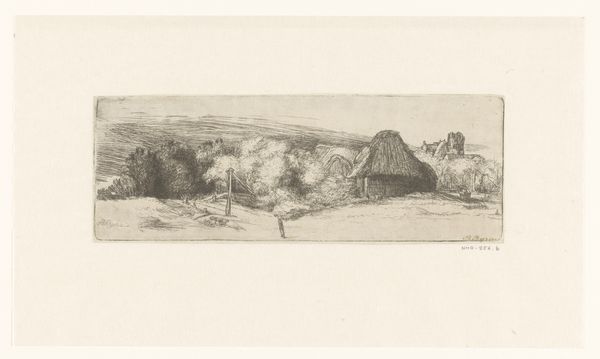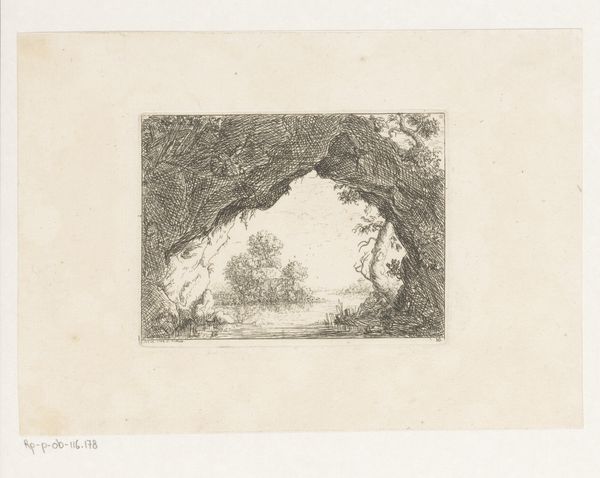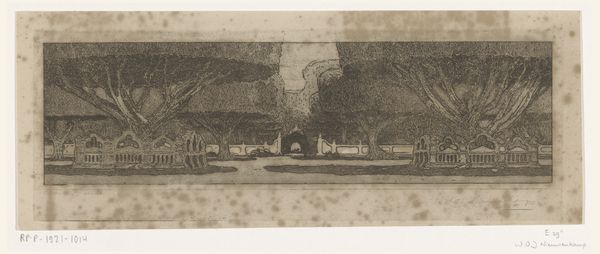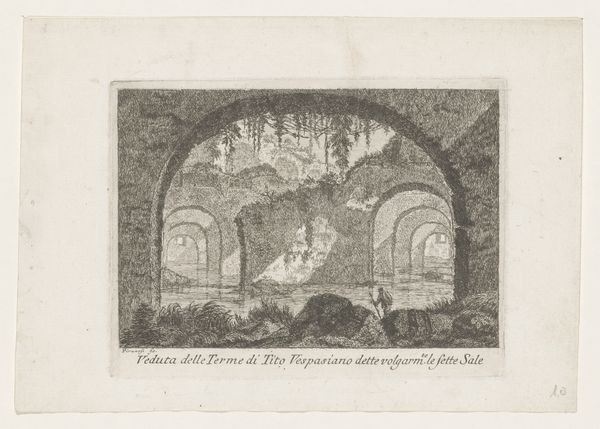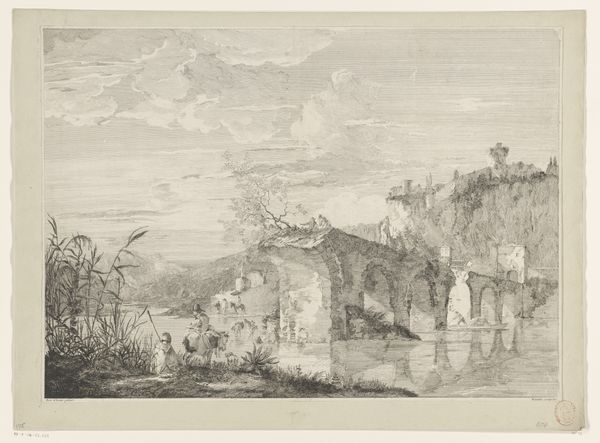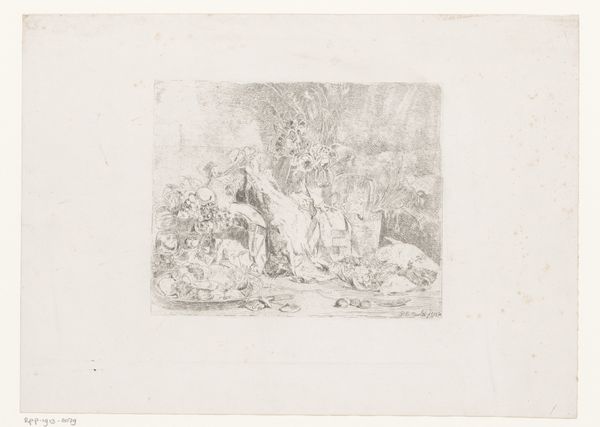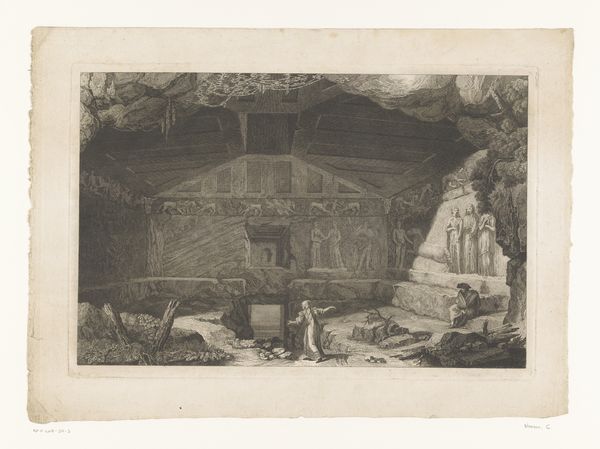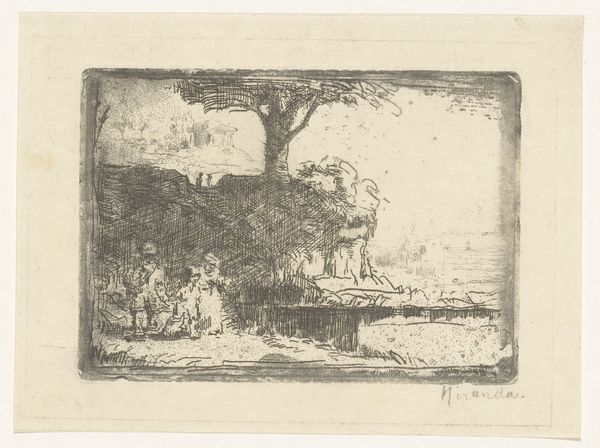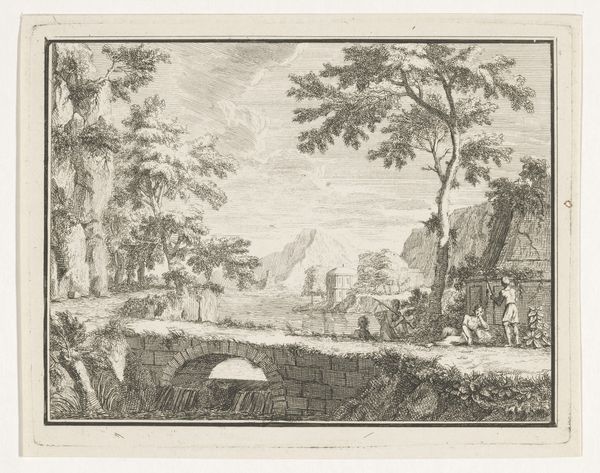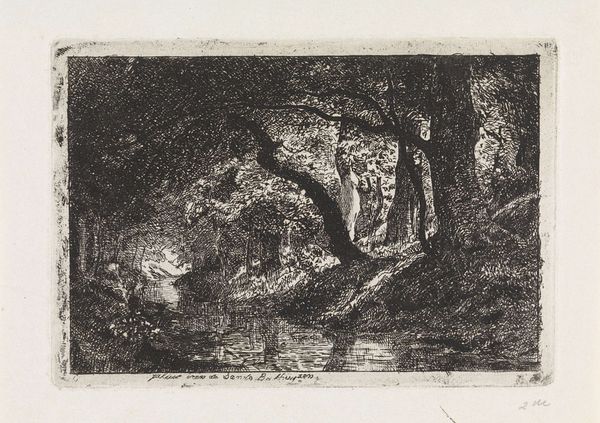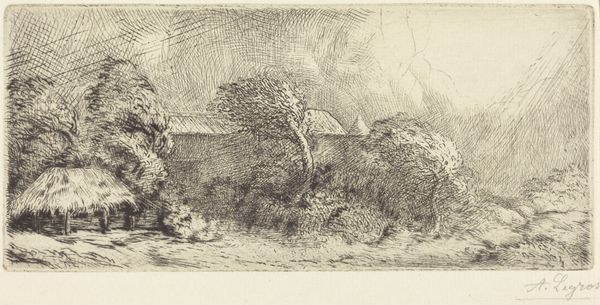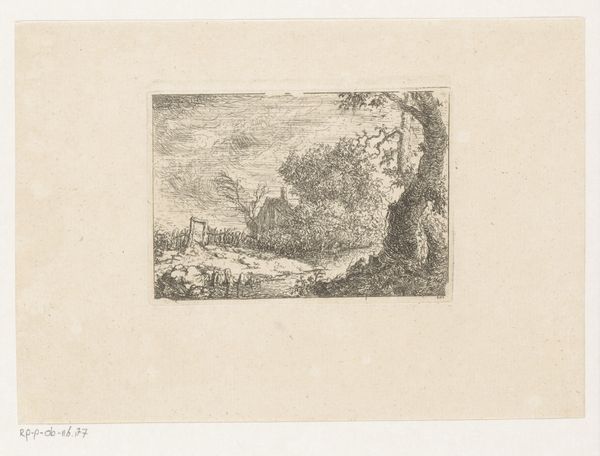
Dimensions: height 56 mm, width 158 mm
Copyright: Rijks Museum: Open Domain
Editor: This is Franz Edmund Weirotter's "Fontein in de tuinen van de Villa d'Este te Tivoli," made in 1767. It’s an etching, and the detail he achieves with line is quite beautiful. It feels almost theatrical, doesn't it? How do you interpret this work? Curator: Indeed. We need to consider the era, the Grand Tour. Aristocrats traveled to Italy, seeking connection with the glories of the classical past, and this view is very much staged for them. The fountain, nestled within the overgrown gardens, speaks to power, leisure and even domination. How do you see the relationship between nature and control here? Editor: I guess it's a staged experience of nature, carefully manicured, to underscore a certain social class? Curator: Precisely. The 'natural' world becomes a backdrop against which status can be performed and cemented, obscuring any real engagement with ecological concerns or social inequities. This tension between the curated experience and the broader social context is key. Who does this landscape exclude? Editor: Good point. The image is lovely, but I hadn’t considered how it's reinforcing existing power structures through this depiction of idyllic leisure. Curator: These picturesque scenes were often commodities, sold as souvenirs to wealthy tourists. The 'artist' acts as a translator between reality and desire. What stories do these images suppress in their picturesque presentation? How might we destabilize this viewpoint? Editor: So by understanding the historical context, we see how art can perpetuate a specific ideology. Thanks, I definitely see it differently now. Curator: Absolutely, questioning what we see, its origin, and its intent can help unveil these stories and open us up to broader interpretations and understandings of not only art, but our history as well.
Comments
No comments
Be the first to comment and join the conversation on the ultimate creative platform.
